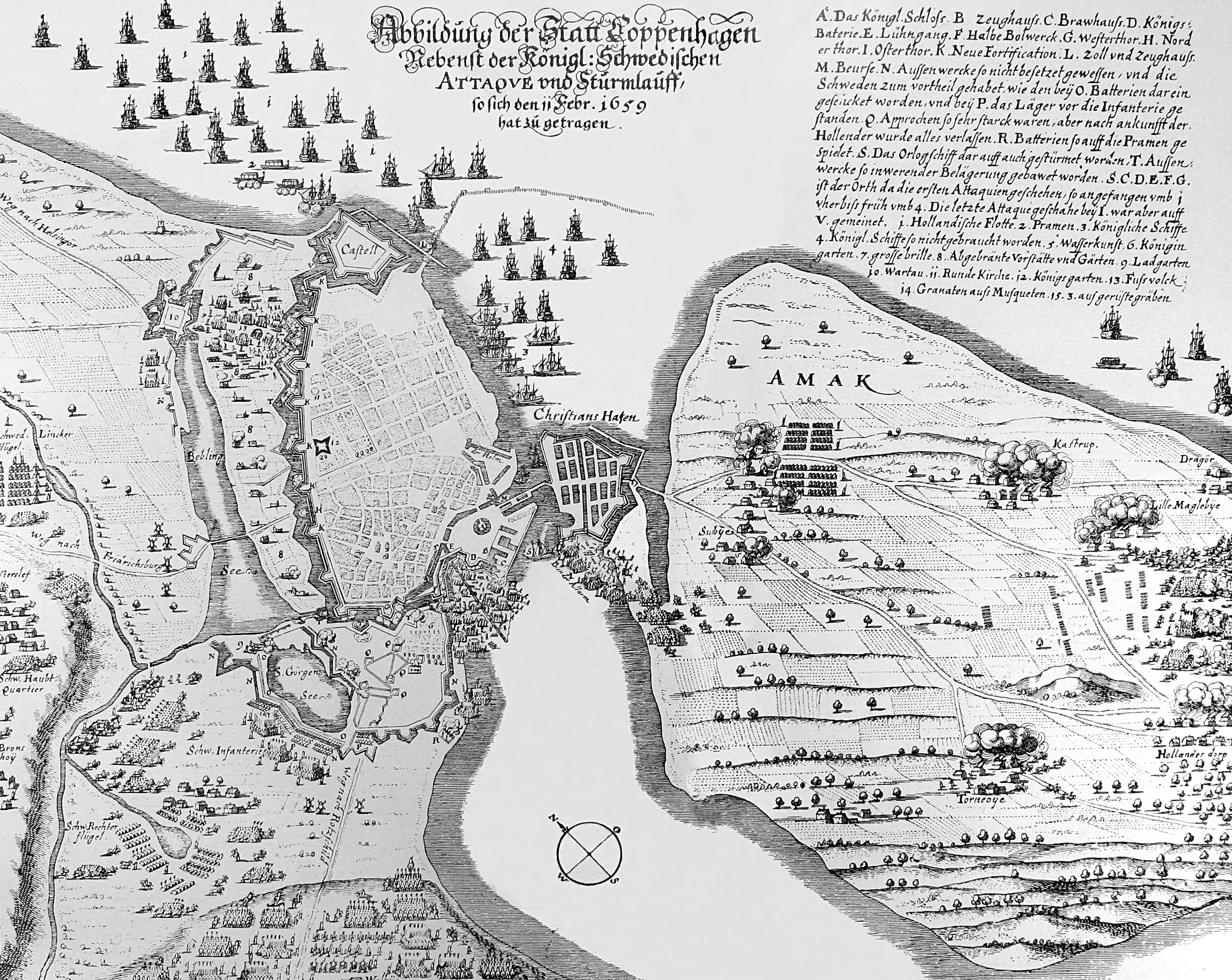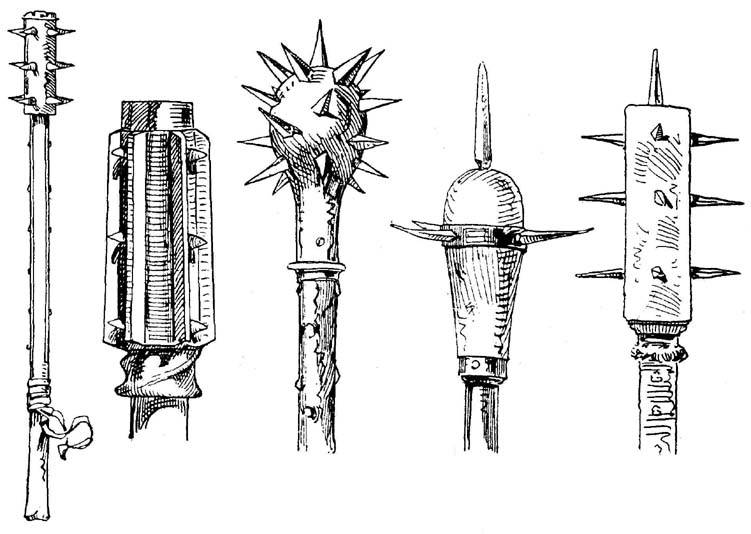|
The Assault On Copenhagen
The Battle of Copenhagen also known as the Assault on Copenhagen on 11 February 1659 was a major battle during the Second Northern War, taking place during the siege of Copenhagen by the Swedish army. Background During the Northern Wars, the Swedish army under Charles X Gustav of Sweden, after invading the Danish mainland of Jutland, swiftly crossed the frozen straits and occupied most of the Danish island of Zealand, with the invasion beginning on 11 February 1658. This forced the Danes to sue for peace. A preliminary treaty, the Treaty of Taastrup, was signed on 18 February 1658, with the final treaty, the Treaty of Roskilde, signed on 26 February 1658, granting Sweden major territorial gains. The Swedish king, however, was not content with his stunning victory, and at the Privy Council held at Gottorp on 7 July Charles X Gustav resolved to wipe his inconvenient rival from the map of Europe. Without any warning, in defiance of international treaty, he ordered his tr ... [...More Info...] [...Related Items...] OR: [Wikipedia] [Google] [Baidu] |
Second Northern War
The Second Northern War (1655–60), (also First or Little Northern War) was fought between Sweden and its adversaries the Polish–Lithuanian Commonwealth (1655–60), the Tsardom of Russia (Russo-Swedish War (1656–1658), 1656–58), Brandenburg-Prussia (1657–60), the Habsburg monarchy (1657–60) and Denmark–Norway (Dano-Swedish War (1657–58), 1657–58 and Dano-Swedish War (1658–60), 1658–60). The Dutch Republic waged an informal trade war against Sweden and seized the colony of New Sweden in 1655, but was not a recognized part of the Polish–Danish alliance. In 1655, Charles X Gustav of Sweden invaded and occupied western Poland–Lithuania, the eastern half of which was Russo-Polish War (1654–67), already occupied by Russia. The rapid Swedish advance became known in Poland as the Deluge (history), Swedish Deluge. The Grand Duchy of Lithuania Union of Kėdainiai, became a Swedish fief, the Polish–Lithuanian regular armies surrendered and the Polish king Joh ... [...More Info...] [...Related Items...] OR: [Wikipedia] [Google] [Baidu] |
Jacob Van Wassenaer Obdam
Jacob, Banner Lord of Wassenaer, Lord Obdam, Hensbroek, Spanbroek, Opmeer, Zuidwijk and Kernhem (1610 – 13 June 1665) was a Dutch nobleman who became lieutenant admiral, and supreme commander of the navy of the Dutch Republic. The name ''Obdam'' was then also spelled as ''Opdam''. British contemporaneous sources typically refer to him as ''Admiral Opdam'' or ''Lord Obdam'' because it was not until 1657 that he bought the Wassenaar Estate from relatives and thus acquired its title. Modern Dutch sources sometimes less correctly insert a second "van" between "Wassenaer" and "Obdam" or use the modern spelling "Wassenaar". Early life Jacob was born in 1610, the eldest son of Lieutenant-Admiral Jacob van Wassenaer Duivenvoorde, born 1574, and Anna van Randerode. After early military training, he joined the army and, in 1631, commanded a company of cavalry, soon rising to the rank of colonel. In this capacity, he took part in several sieges and was commended for his bravery fightin ... [...More Info...] [...Related Items...] OR: [Wikipedia] [Google] [Baidu] |
Militia
A militia () is generally an army or some other fighting organization of non-professional soldiers, citizens of a country, or subjects of a state, who may perform military service during a time of need, as opposed to a professional force of regular, full-time military personnel; or, historically, to members of a warrior-nobility class (e.g. knights or samurai). Generally unable to hold ground against regular forces, militias commonly support regular troops by skirmishing, holding fortifications, or conducting irregular warfare, instead of undertaking offensive campaigns by themselves. Local civilian laws often limit militias to serve only in their home region, and to serve only for a limited time; this further reduces their use in long military campaigns. Beginning in the late 20th century, some militias (in particular officially recognized and sanctioned militias of a government) act as professional forces, while still being "part-time" or "on-call" organizations. For instan ... [...More Info...] [...Related Items...] OR: [Wikipedia] [Google] [Baidu] |
Slotsholmen
Slotsholmen (English: The Castle Islet) is an island in the harbour of Copenhagen, Denmark, and part of Copenhagen Inner City. The name is taken from the successive castles and palaces located on the island since Bishop Absalon constructed the city's first castle on the island in 1167 at the site where Christiansborg Palace lies today. Recognised as the centre of the Government of Denmark since the Middle Ages, the island is sometimes referred to as 'the Island of Power', and is lined with central government institutions and ministries; the name ''Slotsholmen'' is thus also frequently used as a metonym for overall Danish governmental administration. The island is dominated by the vast Christiansborg Palace which houses the Danish Parliament, the Supreme Court of Denmark, the Prime Minister's Office and the State Rooms of the Queen. Also located on the island are the most important ministries, the Danish National Archives, the Royal Danish Library, several museums and the histor ... [...More Info...] [...Related Items...] OR: [Wikipedia] [Google] [Baidu] |
Kastellet, Copenhagen
''Kastellet'' () is a citadel located in Copenhagen, Denmark. It is one of the best preserved fortresses in Northern Europe. It is constructed in the form of a pentagon with bastions at its corners. Kastellet was continuous with the ring of bastioned ramparts which used to encircle Copenhagen but of which only the ramparts of Christianshavn remain today. A number of buildings are located within the grounds of Kastellet, including the Citadel Church as well as a windmill. The area houses various military activities but it mainly serves as a public park and a historic site. History St. Anne's Redoubt King Christian IV of Denmark initiated Kastellet's construction in 1626 with the building of an advanced post, St. Anne's Redoubt ( da, Sankt Annæ Skanse), on the coast north of the city. The redoubt guarded the entrance to the port, together with a blockhouse that was constructed north of Christianshavn, which had just been founded on the other side of the strait between Zealand ... [...More Info...] [...Related Items...] OR: [Wikipedia] [Google] [Baidu] |
Scythe
A scythe ( ) is an agricultural hand tool for mowing grass or harvesting crops. It is historically used to cut down or reap edible grains, before the process of threshing. The scythe has been largely replaced by horse-drawn and then tractor machinery, but is still used in some areas of Europe and Asia. Reapers are bladed machines that automate the cutting of the scythe, and sometimes subsequent steps in preparing the grain or the straw or hay. The word "scythe" derives from Old English ''siðe''. In Middle English and later, it was usually spelt ''sithe'' or ''sythe''. However, in the 15th century some writers began to use the ''sc-'' spelling as they thought (wrongly) the word was related to the Latin ''scindere'' (meaning "to cut"). Nevertheless, the ''sithe'' spelling lingered and notably appears in Noah Webster's dictionaries. A scythe consists of a shaft about long called a ''snaith'', ''snath'', ''snathe'' or ''sned'', traditionally made of wood but now sometimes me ... [...More Info...] [...Related Items...] OR: [Wikipedia] [Google] [Baidu] |
Morning Star (weapon)
A morning star (german: Morgenstern) is any of several medieval club-like weapons consisting of a shaft with an attached ball adorned with one or more spikes. Each used, to varying degrees, a combination of blunt-force and puncture attack to kill or wound the enemy. History The morning star first came into widespread use around the beginning of the fourteenth century, particularly in Germany where it was known as ''Morgenstern''. The term is often confused with the military flail (''fléau d'armes'' in French and ''Kriegsflegel'' in German), which typically consists of a wooden shaft joined by a length of chain to one or more iron-shod wooden bars (heavy sword pommels have also been used as weights). However, there are few depictions of such a ball-and-chain flail from the period, so the weapon of this type appears to have been uncommon. Design The morning star is a medieval weapon consisting of a spiked ball mounted on a shaft, resembling a mace, usually with a long spike ... [...More Info...] [...Related Items...] OR: [Wikipedia] [Google] [Baidu] |
Arquebus
An arquebus ( ) is a form of long gun that appeared in Europe and the Ottoman Empire during the 15th century. An infantryman armed with an arquebus is called an arquebusier. Although the term ''arquebus'', derived from the Dutch word ''Haakbus'' ("hook gun"), was applied to many different forms of firearms from the 15th to 17th centuries, it originally referred to "a hand-gun with a hook-like projection or lug on its under surface, useful for steadying it against battlements or other objects when firing". These "hook guns" were in their earliest forms of defensive weapons mounted on German city walls in the early 15th century. The addition of a shoulder stock, priming pan, and matchlock mechanism in the late 15th century turned the arquebus into a handheld firearm and also the first firearm equipped with a trigger. The exact dating of the matchlock's appearance is disputed. It could have appeared in the Ottoman Empire as early as 1465 and in Europe a little before 1475. The h ... [...More Info...] [...Related Items...] OR: [Wikipedia] [Google] [Baidu] |
Muskets
A musket is a muzzle-loaded long gun that appeared as a smoothbore weapon in the early 16th century, at first as a heavier variant of the arquebus, capable of penetrating plate armour. By the mid-16th century, this type of musket gradually disappeared as the use of heavy armour declined, but ''musket'' continued as the generic term for smoothbore long guns until the mid-19th century. In turn, this style of musket was retired in the 19th century when rifled muskets (simply called rifles in modern terminology) using the Minié ball (invented by Claude-Étienne Minié in 1849) became common. The development of breech-loading firearms using self-contained cartridges (introduced by Casimir Lefaucheux in 1835) and the first reliable repeating rifles produced by Winchester Repeating Arms Company in 1860 also led to their demise. By the time that repeating rifles became common, they were known as simply "rifles", ending the era of the musket. Etymology According to the Online Etymo ... [...More Info...] [...Related Items...] OR: [Wikipedia] [Google] [Baidu] |
Artillery
Artillery is a class of heavy military ranged weapons that launch munitions far beyond the range and power of infantry firearms. Early artillery development focused on the ability to breach defensive walls and fortifications during sieges, and led to heavy, fairly immobile siege engines. As technology improved, lighter, more mobile field artillery cannons developed for battlefield use. This development continues today; modern self-propelled artillery vehicles are highly mobile weapons of great versatility generally providing the largest share of an army's total firepower. Originally, the word "artillery" referred to any group of soldiers primarily armed with some form of manufactured weapon or armor. Since the introduction of gunpowder and cannon, "artillery" has largely meant cannons, and in contemporary usage, usually refers to shell-firing guns, howitzers, and mortars (collectively called ''barrel artillery'', ''cannon artillery'', ''gun artillery'', or - a layman t ... [...More Info...] [...Related Items...] OR: [Wikipedia] [Google] [Baidu] |
Mortar (weapon)
A mortar is usually a simple, lightweight, man-portable, muzzle-loaded weapon, consisting of a smooth-bore (although some models use a rifled barrel) metal tube fixed to a base plate (to spread out the recoil) with a lightweight bipod mount and a sight. They launch explosive shells (technically called bombs) in high-arcing ballistic trajectories. Mortars are typically used as indirect fire weapons for close fire support with a variety of ammunition. History Mortars have been used for hundreds of years. The earliest mortars were used in Korea in a 1413 naval battle when Korean gunsmiths developed the ''wan'gu'' (gourd-shaped mortar) (완구, 碗口). The earliest version of the ''wan'gu'' dates back to 1407. Choi Hae-san (최해산, 崔海山) (1380–1443), the son of Choe Mu-seon (최무선, 崔茂宣) (1325–1395), is generally credited with inventing the ''wan'gu''. In the Ming dynasty, general Qi Jiguang recorded the use of a mini cannon called the Hu dun pao that was simi ... [...More Info...] [...Related Items...] OR: [Wikipedia] [Google] [Baidu] |
Cannon
A cannon is a large- caliber gun classified as a type of artillery, which usually launches a projectile using explosive chemical propellant. Gunpowder ("black powder") was the primary propellant before the invention of smokeless powder during the late 19th century. Cannons vary in gauge, effective range, mobility, rate of fire, angle of fire and firepower; different forms of cannon combine and balance these attributes in varying degrees, depending on their intended use on the battlefield. A cannon is a type of heavy artillery weapon. The word ''cannon'' is derived from several languages, in which the original definition can usually be translated as ''tube'', ''cane'', or ''reed''. In the modern era, the term ''cannon'' has fallen into decline, replaced by ''guns'' or ''artillery'', if not a more specific term such as howitzer or mortar, except for high-caliber automatic weapons firing bigger rounds than machine guns, called autocannons. The earliest known depict ... [...More Info...] [...Related Items...] OR: [Wikipedia] [Google] [Baidu] |










